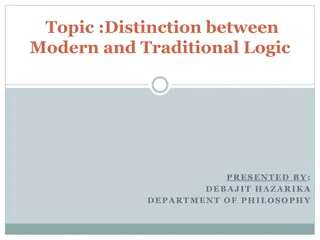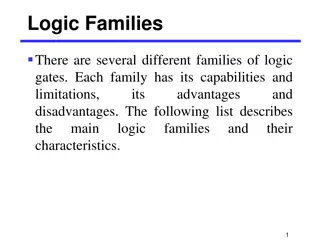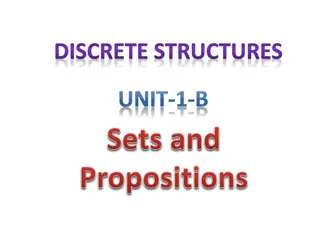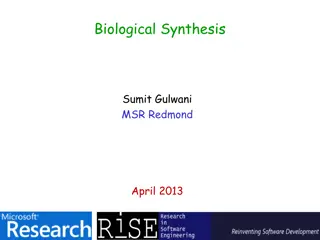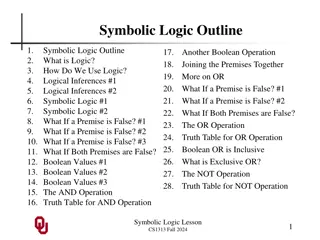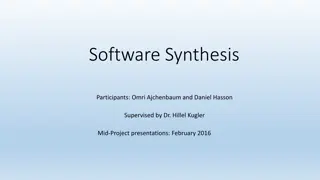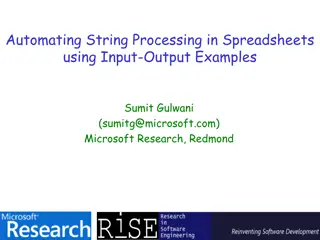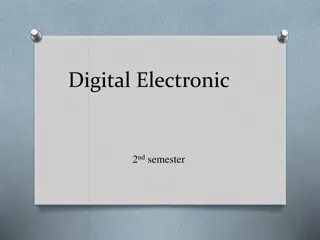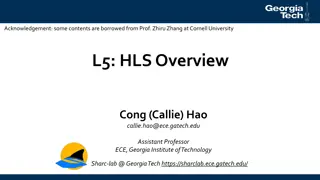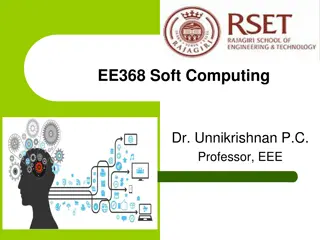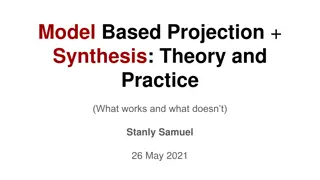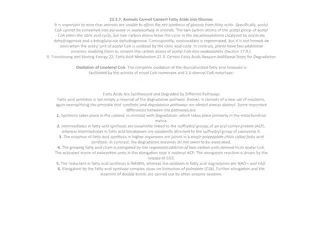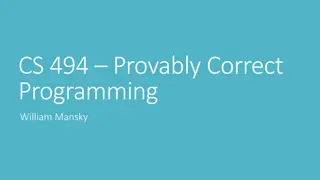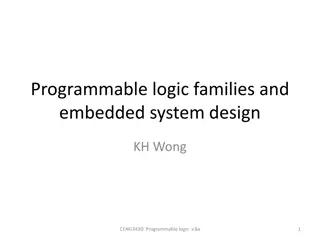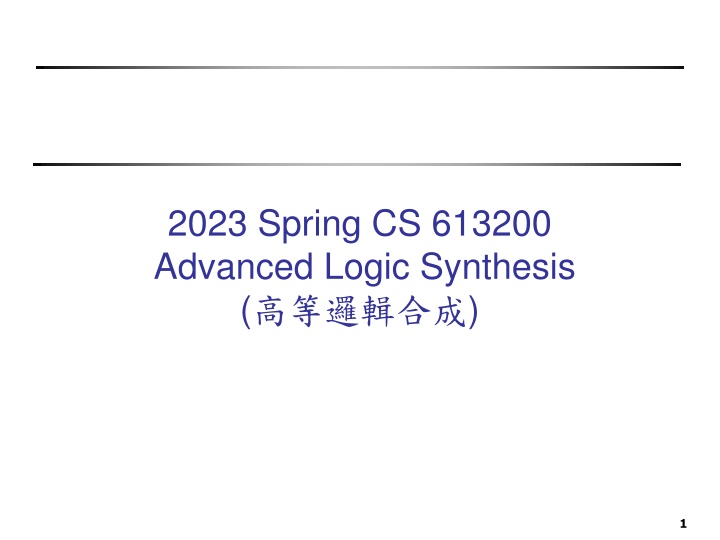
Advanced Logic Synthesis in System Design Process
This course covers theories and methodologies for designing and analyzing logic-level networks. Topics include Boolean functions, logic minimization, timing optimization, technology mapping, synthesis for finite state machines, low-power design, automatic test pattern generation, and hardware security. The content explores Register-Transfer-Level (RTL) synthesis, logic synthesis, physical design, and various processes involved in chip and system design.
Download Presentation

Please find below an Image/Link to download the presentation.
The content on the website is provided AS IS for your information and personal use only. It may not be sold, licensed, or shared on other websites without obtaining consent from the author. If you encounter any issues during the download, it is possible that the publisher has removed the file from their server.
You are allowed to download the files provided on this website for personal or commercial use, subject to the condition that they are used lawfully. All files are the property of their respective owners.
The content on the website is provided AS IS for your information and personal use only. It may not be sold, licensed, or shared on other websites without obtaining consent from the author.
E N D
Presentation Transcript
2023 Spring CS 613200 Advanced Logic Synthesis ( ) 1
A Typical System Design Process Idea System Hardware Software OS Chips Application SW System board 2
A Typical Chip Design Process Chip spec RTL synthesis Logic synthesis Physical design Layout 3
RTL-Level Synthesis Inputs: an RTL netlist and a set of design constraints Each component in the netlist is described either in behavioral, structural, or logic level Data path scheduling and data path allocation Controller synthesis: the transition from controller behavior to structure Module generation 5
Logic Synthesis Inputs: Boolean functions and FSMs Outputs: the blocks of combinational logic and storage elements Logic minimization and optimization Technology mapping 7
Physical-Level Synthesis Inputs: a hierarchical gate-level netlist which may contain hard macros and flexible soft macros Outputs: a layout Floorplanning Placement Routing Compaction 9
This Course Presents theories for design and analysis of logic-level networks 10
Course Outlines Representations for Boolean functions Two-level logic minimization Multi-level logic minimization Timing optimization Technology mapping Synthesis for finite state machines Low power design Automatic test pattern generation & logic optimization Synthesis for hardware security 11
Course Information 3 Credits Time : M56 W4 Place: EECS R224 Website: http://www.cs.nthu.edu.tw/~tingting/course1.html or eeclass: https://eeclass.nthu.edu.tw/course/info/12305 Instructor: Hwang, TingTing ( ) Office: EECS bldg. R442 Ext.: 31310 E-mail: tingting@cs.nthu.edu.tw Prerequisite: Logic Design 12
Course Material Text Book: None References: Logic minimization algorithms for VLSI synthesis, by R. Brayton et. al., Kluwer Academic Switching theory for logic synthesis, by Tsutomu Sasao, Kluwer Academic papers 13
Grading One midterm exam (25%) April 24 Report on the use of tools (25%) Paper presentation (25%) Software project (25%) 14

